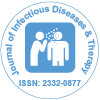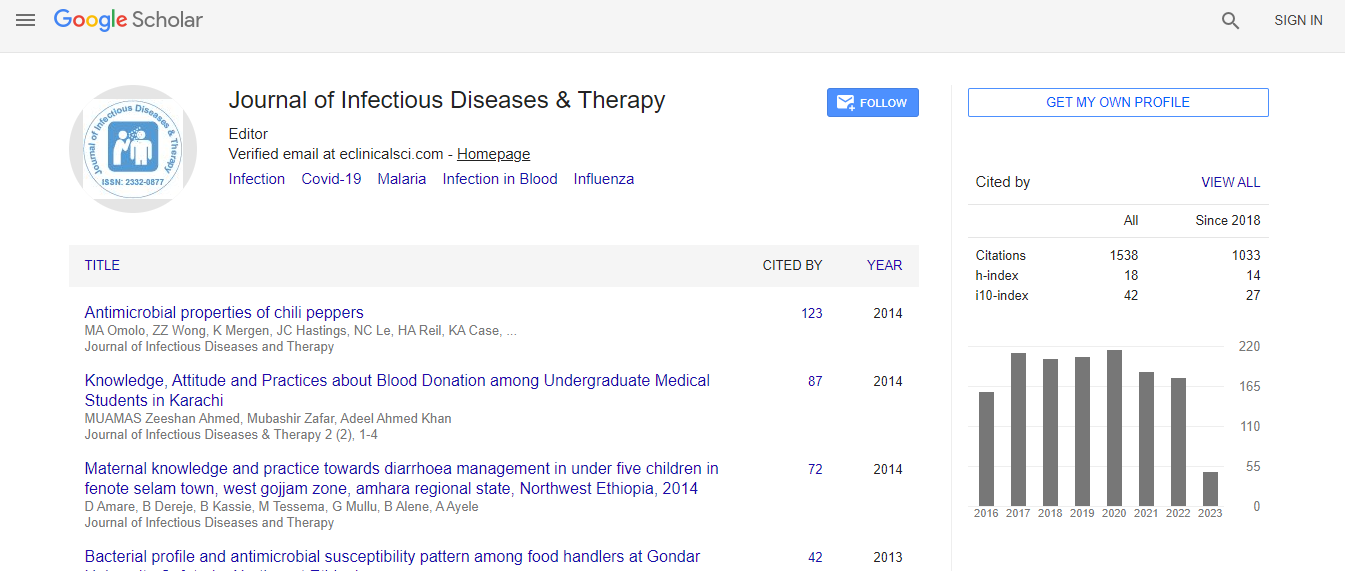Research Article
Detection of Chikungunya virus (CHIKV) in urine of infected mice: a Potential Non-invasive Diagnostic Tool for CHIKV
| Jones PH1 and Okeoma CM1,2* | |
| 1Department of Microbiology, Carver College of Medicine, University of Iowa, Iowa City, IA, USA | |
| 2Interdisciplinary Graduate program in Molecular and Cellular Biology (MCB), University of Iowa, Iowa City, IA, USA | |
| Corresponding Author : | Chioma M Okeoma Department of Microbiology Carver College of Medicine University of Iowa, Iowa City, USA Tel: 319-335-7906 E-mail: chioma_okeoma@uiowa.edu |
| Received: June 03, 2015 Accepted: August 01, 2015 Published: August 08, 2015 | |
| Citation: Jones PH and Okeoma CM (2015) Detection of Chikungunya virus (CHIKV) in urine of infected mice: a Potential Non-invasive Diagnostic Tool for CHIKV. J Infect Dis Ther 3:226. doi:10.4172/2332-0877.1000226 | |
| Copyright: © 2015 Jones et al. This is an open-access article distributed under the terms of the Creative Commons Attribution License, which permits unrestricted use, distribution, and reproduction in any medium, provided the original author and source are credited. | |
| Related article at Pubmed, Scholar Google | |
Abstract
Background: The reemergence of Chikungunya virus (CHIKV) infection and the spread of the virus throughout the world call for a fast, reliable, and improved laboratory diagnostic procedures. The aim of this study was to determine if CHIKV genome is present in other body fluids besides plasma as a tool for developing non-invasive diagnostic method.
Methods: This study utilized a sensitive and less invasive assay that combines the specificity of immunocomplexing and the sensitivity of real-time PCR to detect CHIKV in urine and plasma of infected mice.
Results: CHIKV RNA was detected by immuno-capture-quantitative reverse transcriptase PCR (IC-qPCR) in urine and plasma of infected mice. Viral RNA was detected in urine up to day 30, long after viral clearance in plasma. Furthermore, infectious CHIKV was detected in urine by cell-based immunofluorescence and 50% tissue culture infective dose (TCID50) assays, suggesting the presence of infectious virus in urine.
Conclusion: We demonstrate a potential non-invasive diagnostic approach that could be adapted to screen forCHIKV infection in viremic and aviremic patients using urine.

 Spanish
Spanish  Chinese
Chinese  Russian
Russian  German
German  French
French  Japanese
Japanese  Portuguese
Portuguese  Hindi
Hindi 